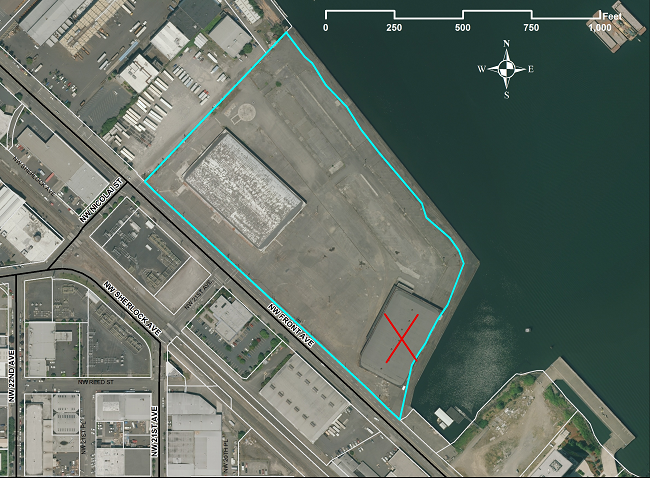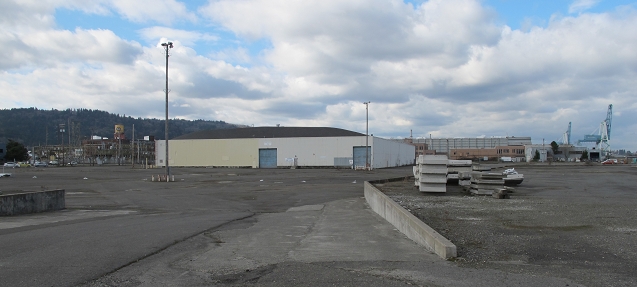Developer Homer Williams wants to build a homeless campus on the Portland waterfront. It’s an innovative and ambitious solution to the city’s escalating homeless crisis.
It may also signal a more proactive approach to homelessness on the part of business community.
In March a coalition of business leaders led by the Portland Business Alliance filed a lawsuit against the city of Portland for allowing camping on the street. An advertising campaign also criticized city practice. But new tactics are creeping in. In January, the Menashe real estate family opened up one of their properties as a homeless shelter and last month announnced plans to expand the shelter by 180 beds.
“This spring, I have seen positive signs [from businesses],” says George Devendorf, exeuctive director of Transition Projects, a homeless services nonprofit.
Transition Projects manages a day use center and a 90-bed men’s shelter in the Bud Clark Commons, a housing and homeless services center that one might call the Homer Williams project of its time: the $47 million LEED Platinum building formerly known as the Resource Access Center was the focal point of the city’s Ten Year Plan to End Homelessness.
The ten year anniversary came and went without much fanfare in 2014.
The Commons also includes 130 studios for homeless residents managed by Family Forward.
When the Commons was designed, the estimate was that 400 people a day would use the center, Deverndorf says. “Now we see 700 people a day. From a resource access, taxpayers are getting their money’s worth.” The building was completed in 2010.
Devendorf says a homeless campus Williams proposes creates “access at scale.” Sites for shelters are hard to come by, and building smaller facilities without the wraparound services won’t solve the problem, he says.
An estimated 3,600 people live on the street in Portland.
The homeless campus proposal, modeled after the nationally renowned homeless services facility Haven of Hope in San Antonio, would serve about 1,500 people, and include shelter beds, medical and dental care, employment and other wraparound services. “It’s a transformational project,” says Williams.
Williams says he is raising $360,000 in support of a preliminary plan for the center, which would cost an estimated $100 million. He has hired two people from San Antonio to help guide the process, won support from public officials such as Deborah Kafoury and has been working the phones to raise funds from businesses.
“They all returned my calls,” says Williams, noting that Umpqua Bank and Killian Pacific, among others, have written checks in support of the project.
Asked if the business community is taking a more solutions oriented approach, Williams says the problem had reached a crisis point and the private sector needed to take action.
“But everybody needs to get involved. I want this to be a public-private partnership, and I want the private side to manage it.”
Williams, known for his role in developing Portland’s signature public private partnerships, the Pearl District and South Waterfront, is used to getting what he wants.
But one stumbling block is the proposed location, a 12-acre industrial zoned parcel that used to serve as the Port of Portland’s Terminal 1. The parcel is owned by the Bureau of Environmental Services, and Nick Fish, the commissioner in charge, has indicated he would prefer to sell the property to a high value business.
“We’re interested in creating family wage jobs,” says Jim Blackwood, the commissioner’s senior policy director. He notes the city’s comprehensive plan, adopted yesterday, points to a shortage of industrial land.
It’s an interesting conundrum: the business community’s longstanding call for more shovel-ready land is now up against the embryonic call to use available sites for a massive homeless services center. A sign of the times.
Devendorf says he supports the homeless campus concept, although like others he is skeptical about the project’s financial viability. He has his own reservations about the location, saying the Terminal 1 site is barely close enough to the city core, a key criterion for a successful homelessness transition project.
He sounds another cautionary note.
Transitioning people out of homelessness requires more than a good case manager and an array of social services, he says. People also need somewhere to live. “You need a comparable investment in affordable housing,” he says.




